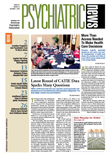Amid a push by federal and state health officials and private insurers to expand the availability of information on the prices and quality of care in the United States, European health officials have noted that such an approach introduces new challenges.
Most research on European health care programs that make price and quality-of-care information available to the public shows that consumers generally don't use the information to make health care decisions, said marc Berg, a partner at Plexis Medical Group, a Dutch insurance firm.
He offered his observations at a November congressional briefing during the 2006 International Symposium on Health Care Policy, an annual summit hosted by the Commonwealth Fund and the Alliance for Health Reform.
Berg said the European public has, however, responded to health data information in cases in which information is presented in a timely and understandable way. But, he noted, “If you look at the same literature, you would realize that much of the information presented to consumers or patients is at the wrong level.”
An example in which health information for the public achieved its goal was that of a dutch cardiovascular center about which the local media reported serious safety deficiencies; the center then saw a 50 percent drop in its patient load as patients sought care elsewhere.
While public access to medical information is usually beneficial, the patients may need help in understanding the significance of the range of information available. Roger Boyle, M.D., national clinical director for heart disease at the U.K. Department of Health, said at the briefing that a“ facilitator” who helps patients search for and understand medical quality data could increase the use and usefulness of publicly available quality and price data. A publicly available database of physician quality reports and patient outcomes, which was developed as part of a continuing British effort to improve cardiovascular health, was designed using feedback from tests with patient groups to ensure that the information was accessible and understandable.
“There is a real challenge here in raising patient awareness,” he stated.
Costs Spur U.S. Action
Although the financial implications of increased quality and price reporting remain unclear, attendees were adamant that the steady increases in public and private medical costs make expanded use of such reporting inevitable.
The Commonwealth Fund's 2006 Health Policy Survey found that U.S. Public health care spending is comparable to that of most European countries, but that spending is in addition to massive private and out-of-pocket spending that is largely a characteristic of the U.S. System. Not only has annual growth in medical costs exceeded the rate of inflation for several years, but also estimates predict that federally funded health care costs alone will exceed the historic rate of federal spending on health and nonhealth programs combined by 2050.
In the context of increasing cost pressures in what is already the world's most expensive per-capita health care system, both U.S. and European health officials said that making price and quality information available to the public is likely to become a more popular strategy.
David Fisher, director of health policy for the Senate Budget Committee, described a huge push for price and quality data transparency over the last year from the Bush administration and federal law-makers through the Centers for Medicare and Medicaid Services (CMS).
“That information is critically important to patients, and it is sorely lacking in the United States,” he said. “The lack of transparency that we have allows providers who [perform poorly] to hide and get away with performing badly.”
Pilot CMS projects to gather quality and comparative price information from clinicians and hospitals will be bolstered, Fisher said, by such legislative efforts as the medicare Quality Enhancement Act (S 3900), which would authorize the release of medicare data to qualified organizations to develop cost and quality reports while safeguarding patient privacy. The reports would be available to the public within one year. The bill, which was introduced late in the year, was referred to the Senate Finance committee.
“Clinical data is the best way to measure performance, but we don't have that so we need to start with claims data,” Fisher said at the briefing.
Benefits of Comparisons questioned
Supporters of publicly available price and quality information said such measures could spur competition among health care professionals to provide better and more cost-effective care. Jonathan Perlin, M.D., former undersecretary for health in the department of Veterans affairs (VA), said a program that publicly displayed performance data in different regions served by the VA helped spur improvements in care by creating a sense of competition among the different Va regions.
Supporters of publicly available information on quality of care said such a program would add a competitive motive that would spur clinicians' and administrators' professional desire to provide even higher-quality care than their colleagues do.
However, Boyle, the British health official, described the recent competition among clinicians and medical institutions to provide better care as “overrated” and said it would not be as effective as systematic use of bench-marks to ensure that medical procedures are properly performed.
The Dutch health care system, which uses closely regulated private insurers, is better able to utilize clinicians' quality and price reporting data, said Berg. They are more effective in the Netherlands because the insurers study the data and can create incentives for the public to obtain care from the most cost-effective providers.
“Having insurers set the prices provides an incredible stimulus for [health care] providers to improve,” Berg said.
More information on the congressional briefing is posted at<www.kaiser-network.org/health_cast/hcast_index.cfm?=detail&hc=1936>.▪
